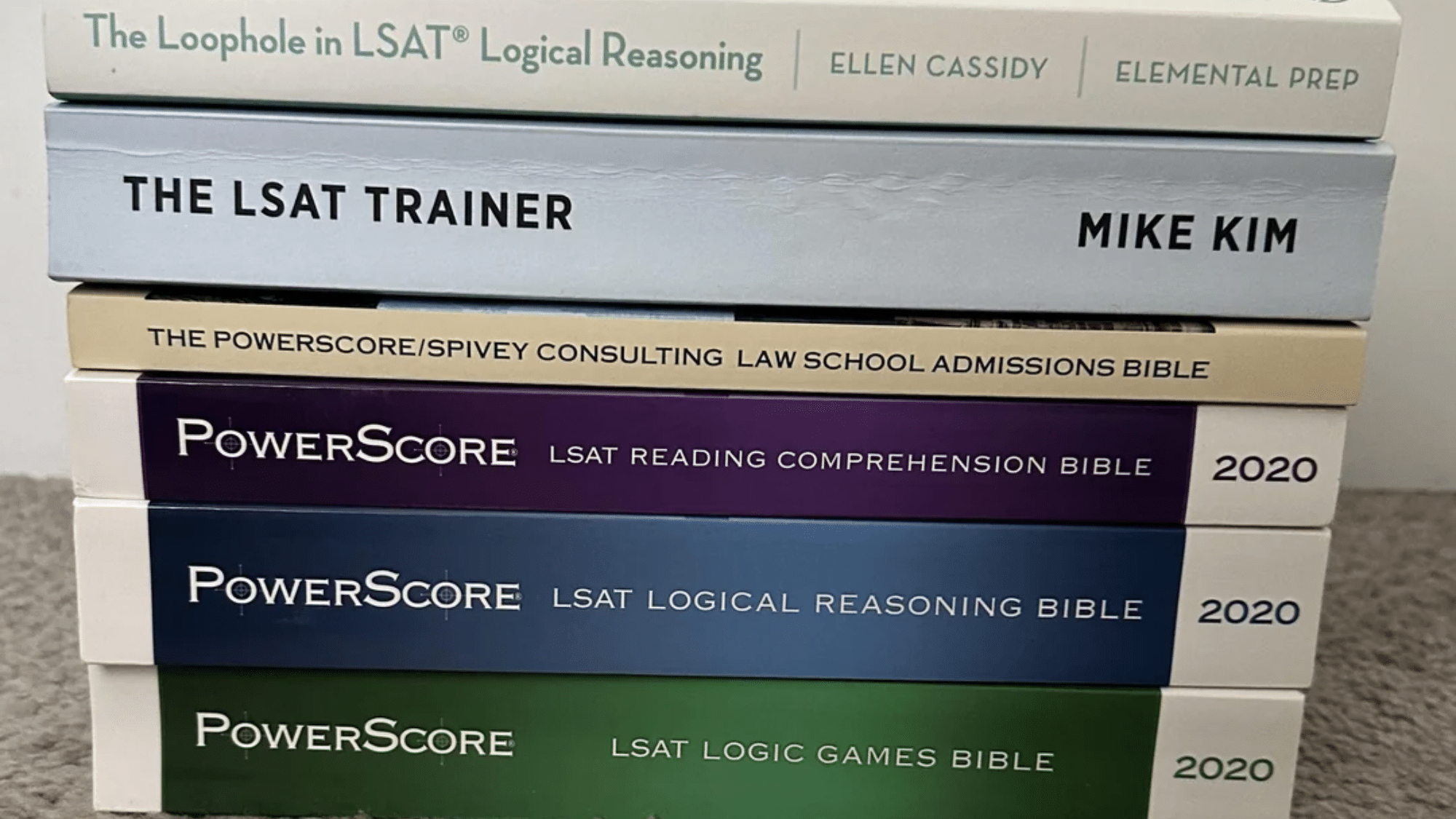The LSAT Reading Comprehension section tests your ability to understand and analyze complex legal texts. This critical section makes up a significant portion of your total LSAT score.
Strong reading skills directly impact your law school success and career prospects. LSAT reading comprehension practice questions help you master the specific skills tested on exam day.
Practice builds familiarity with passage types and question formats.
Each LSAT reading comprehension example reveals the test’s unique approach to analytical thinking.
This guide offers comprehensive practice materials and proven strategies for section mastery.
The Basic Structure of LSAT Reading Comprehension
Let’s break down what you’re actually dealing with on test day.
The Reading Comprehension section gives you 35 minutes to tackle 4 passages with a total of 26-28 questions. That breaks down to roughly 8-9 minutes per passage, including reading time and answering questions.
Not a lot of wiggle room, right?
Here’s how those 4 passages typically break down:
- 3 single passages (each around 450-550 words)
- 1 comparative reading passage (two shorter related passages totaling about 450-550 words)
What Topics Can You Expect in LSAT Reading Comprehension?
The LSAT Reading Comprehension section covers diverse academic and professional subjects to test your analytical skills across various fields.
Understanding these topic areas helps you prepare for the intellectual challenges you’ll encounter on test day.
| TOPIC CATEGORY | COMMON SUBJECTS |
|---|---|
| Law and Legal Studies | Constitutional law, legal precedents, court procedures, jurisprudence |
| Natural Sciences | Biology, chemistry, physics, environmental science, and medical research |
| Social Sciences | Psychology, sociology, anthropology, political science, economics |
| Arts and Humanities | Literature, philosophy, art history, cultural studies, linguistics |
| Business and Economics | Market theory, corporate governance, economic policy, and financial systems |
| Technology and Innovation | Scientific discoveries, technological advancements, and digital ethics |
| History and Politics | Historical events, political movements, governance systems, and policy analysis |
These diverse topics ensure the test measures your ability to comprehend complex material regardless of your academic background or personal interests.
LSAT Reading Comprehension Example Questions

Here’s the truth: you can read about LSAT strategies all day long, but nothing beats actually working through real questions.
Practice questions help you understand not just what the test looks like, but how the test makers think. Every question follows specific patterns, and the more you practice, the better you’ll get at recognizing these patterns.
Let’s walk through some realistic examples so you can see exactly what you’re dealing with on test day.
Sample Passage 1: Art History
The emergence of abstract expressionism in the 1940s marked a pivotal shift in American art, reshaping New York into the epicenter of the international art world.
Unlike their European predecessors, who often worked within established artistic traditions, abstract expressionists like Jackson Pollock and Mark Rothko sought to create an entirely new visual language. They emphasized spontaneous, emotional expression over representational accuracy.
This movement arose partly as a response to the trauma of World War II and the growing influence of psychoanalytic theory in American intellectual circles. Artists began to view the canvas as a space for psychological exploration rather than mere aesthetic decoration.
Pollock’s “drip paintings,” for instance, represented a radical departure from traditional painting techniques, allowing the artist’s subconscious to guide the creative process through seemingly random gestures and movements.
Critics initially dismissed abstract expressionism as chaotic and meaningless, but the movement gained legitimacy through the support of influential gallery owners and art critics like Clement Greenberg. Greenberg argued that abstract expressionism represented the natural evolution of modern art, freed from the constraints of political ideology and popular appeal.
However, recent scholarship has challenged this view, suggesting that the movement’s rise was significantly aided by Cold War politics, as the U.S. government promoted abstract art as a symbol of American creative freedom in contrast to Soviet social realism.
Example Questions
Each question type tests specific abilities you’ll need to master for optimal performance.
1. Main Idea Question
The primary purpose of the passage is to:
(A) Criticize abstract expressionist artists for abandoning traditional techniques
(B) Trace the development and reception of abstract expressionism in American art
(C) Argue that abstract expressionism was superior to European artistic traditions
(D) Examine the influence of psychoanalytic theory on 1940s American artists
(E) Defend abstract expressionism against its early critics
Answer: (B) The passage provides an overview of how abstract expressionism developed, its characteristics, and how it was received by critics and supported by various factors.
2. Detail Recall Question
According to the passage, abstract expressionist artists differed from their European predecessors in that they:
(A) Focused more heavily on political themes
(B) Used more expensive materials and techniques
(C) Sought to create an entirely new visual language
(D) Were more concerned with public appeal
(E) Relied more heavily on established artistic traditions
Answer: (C) The passage explicitly states that, unlike Europeans “who often worked within established artistic traditions,” abstract expressionists sought to create an entirely new visual language.”
3. Inference Question
The passage suggests that Clement Greenberg’s view of abstract expressionism:
(A) Was universally accepted by art historians
(B) Emphasized the movement’s political significance
(C) May have been overly simplistic
(D) Focused primarily on the technical innovations of the artists
(E) Was influenced by his personal relationship with the artists
Answer: (C) The passage mentions that “recent scholarship has challenged this view,” suggesting Greenberg’s interpretation was incomplete or overly simple.
4. Author’s Attitude Question
The author’s attitude toward the role of Cold War politics in promoting abstract expressionism can best be described as:
(A) Highly critical
(B) Completely dismissive
(C) Cautiously accepting
(D) Enthusiastically supportive
(E) Entirely neutral
Answer: (C) The author presents the Cold War influence as a legitimate scholarly perspective (“recent scholarship has challenged”) without taking a strong stance either way.
Sample Passage 2: Natural Science
Recent discoveries in neuroscience have fundamentally challenged long-held assumptions about brain plasticity and recovery after injury.
For decades, scientists believed that the adult brain possessed limited capacity for regeneration, with damaged neural pathways remaining permanently impaired. This pessimistic view led to therapeutic approaches that focused primarily on compensatory strategies rather than actual neural repair.
However, groundbreaking research has revealed that the brain exhibits remarkable neuroplasticity throughout life. When one region suffers damage, neighboring areas can actually reorganize themselves to assume lost functions.
This process, known as cortical remapping, involves the formation of new neural connections and the strengthening of existing pathways. Studies using advanced imaging techniques have documented cases where stroke patients recovered language abilities even after significant damage to traditional speech centers.
The implications for rehabilitation are profound. Traditional therapy emphasized learning to work around deficits, but new approaches focus on intensive, repetitive exercises designed to stimulate neural reorganization.
Constraint-induced movement therapy, for example, forces patients to use impaired limbs by restricting the healthy ones, promoting the development of new neural pathways.
While not all patients experience dramatic recovery, the potential for meaningful improvement has revolutionized treatment protocols and provided hope for millions suffering from brain injuries.
Example Questions
Each question type tests specific abilities you’ll need to master for optimal performance.
5. Structure Question
The organization of the passage can best be described as:
(A) Presenting a problem and proposing multiple solutions
(B) Describing outdated beliefs, introducing new discoveries, and discussing implications
(C) Comparing two competing theories and evaluating their merits
(D) Analyzing the causes of a phenomenon and predicting future developments
(E) Critiquing current research methods and suggesting improvements
Answer: (B) The passage moves from old beliefs about brain plasticity to new discoveries, then discusses how these findings change treatment approaches.
6. Detail Question
According to the passage, cortical remapping involves:
(A) Surgical removal of damaged brain tissue
(B) Pharmaceutical intervention to prevent further damage
(C) Formation of new neural connections and strengthening of existing pathways
(D) Compensation by learning to use other body parts
(E) Electrical stimulation of dormant brain regions
Answer: (C) The passage explicitly defines cortical remapping as involving “the formation of new neural connections and the strengthening of existing pathways.”
Sample Passage 3: Social Science
The concept of emotional intelligence, popularized by psychologist Daniel Goleman in the 1990s, has significantly influenced educational policy and workplace management practices. Emotional intelligence encompasses the ability to recognize, understand, and manage both one’s own emotions and those of others.
Proponents argue that these skills are often more predictive of success than traditional measures of cognitive ability, citing studies that show emotionally intelligent individuals tend to have better relationships, higher job performance, and greater life satisfaction.
Educational institutions have increasingly incorporated social-emotional learning (SEL) programs into their curricula, teaching students skills such as empathy, self-regulation, and conflict resolution. These programs aim to develop the whole child, not just academic competencies.
Research suggests that students who participate in SEL programs show improved academic performance, reduced behavioral problems, and better mental health outcomes.
However, critics question both the scientific validity and practical implementation of emotional intelligence concepts.
Some researchers argue that emotional intelligence is simply a repackaging of existing personality traits and social skills rather than a distinct form of intelligence. Others worry that the emphasis on emotional skills in education diverts resources and attention from core academic subjects.
Additionally, measuring emotional intelligence remains problematic, as most assessments rely on self-reporting, which can be influenced by social desirability bias and cultural differences in emotional expression.
Example Questions
Each question type tests specific abilities you’ll need to master for optimal performance.
7. Author’s Perspective Question
The author’s presentation of emotional intelligence can best be characterized as:
(A) Strongly advocating for its widespread implementation
(B) Completely dismissing its value and validity
(C) Presenting both supportive evidence and legitimate concerns
(D) Focusing primarily on its applications in education
(E) Emphasizing its superiority over traditional intelligence measures
Answer: (C) The author presents both the benefits claimed by proponents and the criticisms raised by skeptics in a balanced way.
8. Inference Question
The passage suggests that one major challenge in studying emotional intelligence is:
(A) The lack of interest from researchers
(B) Insufficient funding for large-scale studies
(C) The difficulty of measuring emotional skills objectively
(D) The absence of standardized educational programs
(E) The resistance from traditional educators
Answer: (C) The passage mentions that “measuring emotional intelligence remains problematic” and discusses issues with self-reporting and cultural differences.
Sample Passage 4: Law
The doctrine of judicial review, established in the landmark case Marbury v. Madison (1803), grants federal courts the power to invalidate laws and executive actions that violate the Constitution.
Chief Justice John Marshall’s decision fundamentally shaped the balance of power among the three branches of government, establishing the judiciary as the ultimate arbiter of constitutional meaning. This principle has become so embedded in American legal culture that few question the legitimacy of judicial review today.
Yet the Constitution contains no explicit provision granting courts this authority.
Marshall’s reasoning relied heavily on the logical necessity of judicial review within a system of limited government and a written constitution. He argued that if the Constitution is truly the supreme law, then courts must have the power to enforce its provisions against conflicting legislation.
Without this power, constitutional limitations would be meaningless, and the concept of limited government would collapse.
Modern critics argue that judicial review represents an undemocratic concentration of power in the hands of unelected judges. They contend that allowing courts to overturn the will of elected representatives undermines popular sovereignty and democratic governance.
Some propose alternative mechanisms for constitutional enforcement, such as legislative review or constitutional conventions, that would restore power to democratically accountable institutions.
However, defenders of judicial review maintain that protecting constitutional rights sometimes requires insulation from majority pressures, particularly when fundamental rights of minorities are at stake.
Example Questions
Each question type tests specific abilities you’ll need to master for optimal performance.
9. Function Question
The second paragraph serves primarily to:
(A) Critique Marshall’s reasoning in Marbury v. Madison
(B) Explain the constitutional basis for judicial review
(C) Describe the historical context of the 1803 decision
(D) Present Marshall’s logical justification for judicial review
(E) Compare American and foreign approaches to constitutional interpretation
Answer: (D) The second paragraph explains Marshall’s reasoning for why judicial review must exist, even though it’s not explicitly in the Constitution.
10. Application Question
Based on the passage, defenders of judicial review would most likely support which of the following scenarios?
(A) A legislature overturning a court decision through majority vote
(B) A court striking down a popular law that violates free speech rights
(C) Judges being elected rather than appointed
(D) Constitutional amendments are being decided by popular referendum
(E) Legislative committees reviewing judicial decisions
Answer: (B) The passage states that defenders believe judicial review is necessary to protect rights, “particularly when fundamental rights of minorities are at stake,” even against majority will.
Official LSAT Reading Comprehension Practice Resources
Access to authentic LSAT materials significantly improves your preparation effectiveness and test performance.
These official platforms provide the most accurate representation of actual exam content and format.
1. LSAC’s Official Website
LSAC’s official website serves as your primary source for authentic LSAT Reading Comprehension practice materials.
The platform offers genuine questions from previous administrations, ensuring you experience the exact difficulty level and question styles you’ll encounter on test day.
These materials provide unmatched authenticity that third-party resources cannot replicate.
2. Khan Academy Partnership
Khan Academy’s collaboration with LSAC delivers comprehensive, free LSAT preparation featuring official Reading Comprehension content.
The platform includes detailed answer explanations for every choice, helping you understand both correct reasoning and common mistakes.
Personalized recommendations adapt to your performance patterns, focusing practice time on areas needing improvement.
3. LawHub
LawHub represents LSAC’s advanced digital preparation platform, offering timed practice sections that simulate actual testing conditions.
The system provides instant feedback and comprehensive scoring analytics to track your progress over time. Official practice tests and detailed performance breakdowns help identify strengths and weaknesses for targeted improvement strategies.
Tips for Mastering LSAT Reading Comprehension
Success in LSAT Reading Comprehension requires strategic approaches and consistent practice with authentic materials.
These proven techniques help you develop the analytical skills and timing necessary for optimal performance.
- Practice Active Reading Techniques: Engage with passages by underlining key points, noting transitions, and identifying the author’s tone and main arguments.
- Maintain a Consistent Practice Schedule: Regular, timed practice sessions improve both reading speed and answer accuracy under pressure conditions.
- Thoroughly Review Incorrect Answers: Analyze wrong choices to understand flawed reasoning patterns and avoid repeating similar mistakes on future questions.
- Diversify Your Reading Materials: Expose yourself to various academic disciplines and writing styles to build adaptability for unfamiliar passage topics.
- Master Time Management Strategies: Develop efficient passage reading and question-answering techniques that maximize accuracy within strict time constraints.
Implementing these strategies with official LSAC materials creates a comprehensive preparation approach that builds both confidence and competence for test day success.
Wrapping It Up
Getting good at LSAT Reading Comprehension takes practice with real test materials and smart study methods.
Using official LSAC resources gives you the best preparation because they contain actual past exam questions.
Regular practice helps you read faster while staying accurate. Learning from mistakes by reviewing wrong answers prevents future errors. The reading skills you develop will also help in law school coursework.
Stay consistent with practice, use official materials, and don’t get discouraged by tough passages.
With dedication and the right approach, you’ll successfully tackle this important LSAT section.












